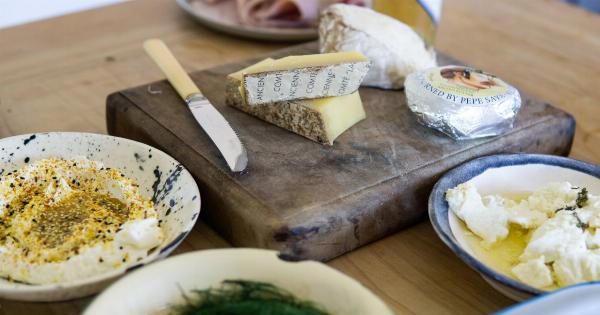When it comes to cheese, most people envision gooey, molten goodness. From stretchy pizza cheese to oozy grilled cheese sandwiches, the melting properties of cheese have become synonymous with indulgence and satisfaction.
However, there are certain types of cheeses that famously refuse to melt, perplexing and even frustrating culinary enthusiasts. In this article, we delve into the world of non-melting cheeses, exploring the reasons behind their stubbornness and uncovering the unique culinary experiences they offer.
1. The Science Behind Melting Cheese
Before we unravel the mystery of non-melting cheeses, it’s important to understand the science behind melting cheese. When heat is applied to cheese, its proteins start to break down, allowing the fat and moisture to separate.
This process creates a viscous liquid that we commonly associate with melted cheese.
2. Why Do Some Cheeses Refuse to Melt?
While most cheeses melt beautifully, there are exceptions that seemingly defy the laws of culinary physics. These non-melting cheeses tend to fall into two main categories: fresh cheeses and aged cheeses.
3. Fresh Non-Melting Cheeses
Fresh cheeses, like cottage cheese, ricotta, and queso fresco, are moist and crumbly in texture. Due to their high moisture content, these cheeses do not break down and homogenize like melting cheeses.
Instead, they maintain their distinct textural profiles, even when subjected to heat. This makes them ideal for applications that require their signature characteristics, such as adding creaminess to salads or stuffing fillings in pastries.
4. Aged Non-Melting Cheeses
On the other end of the spectrum, certain aged cheeses possess a stubborn resistance to melting.
Cheeses like Parmesan, Pecorino Romano, and Grana Padano have lower moisture content and higher protein content than melting varieties, which contributes to their inability to melt easily. These cheeses are better suited for grating, shaving, or enjoying in their solid form, as their distinct flavors and textures are best preserved without undergoing the melting process.
5. Cheese Fondue: The Melting Magic
One famous exception to the non-melting rule is cheese fondue. Traditional cheese fondue recipes call for a combination of melting cheeses like Gruyère and Emmental, along with wine and other flavorings.
The science behind a successful cheese fondue lies in the balance between the melting properties of certain cheeses and the added elements that prevent complete separation. This allows for a smooth and dip-worthy cheese sauce that captivates cheese enthusiasts worldwide.
6. When Non-Melting Cheeses Are a Blessing
While the lack of melting ability might be frustrating for those hoping to achieve a perfectly melted cheese topping or a gooey sandwich filling, non-melting cheeses bring their own unique advantages to the culinary world.
7. Perfect Non-Melting Cheeses for Grating
Hard, non-melting cheeses like Parmesan and Pecorino Romano excel in their grated form. Powdered over pasta dishes, soups, and salads, these cheeses add a burst of flavorful intensity without turning into a gooey mess.
Their ability to retain their texture makes them perfect for garnishing and finishing dishes with a sprinkle of savory goodness.
8. Non-Melting Cheeses for Charcuterie Boards
When creating a charcuterie board, a variety of cheese textures is crucial for an enticing presentation.
Non-melting cheeses like Manchego, Gouda, or Stilton provide a firm and crumbly component that contrasts beautifully with the creaminess of melting Brie or Camembert. The combination of melting and non-melting cheeses offers a diverse taste and textural experience for cheese board connoisseurs.
9. Innovative Uses for Non-Melting Cheeses
Chefs and home cooks have found creative ways to use non-melting cheeses to their advantage.
From incorporating crumbled feta into salads to stuffing peppers with goat cheese, these non-melting varieties offer unique taste profiles and textures that can elevate a dish to new heights. By embracing the qualities that make them resistant to melting, a whole world of culinary exploration opens up.
10. The Never-Ending Cheese Debate
The debate surrounding non-melting cheeses is endless. Some argue that cheese should always melt for the ultimate gastronomic experience, while others celebrate the distinct qualities of non-melting cheeses.
Whichever side you find yourself on, it’s clear that the culinary world is enriched by the variety of cheeses available, whether they melt or not.































